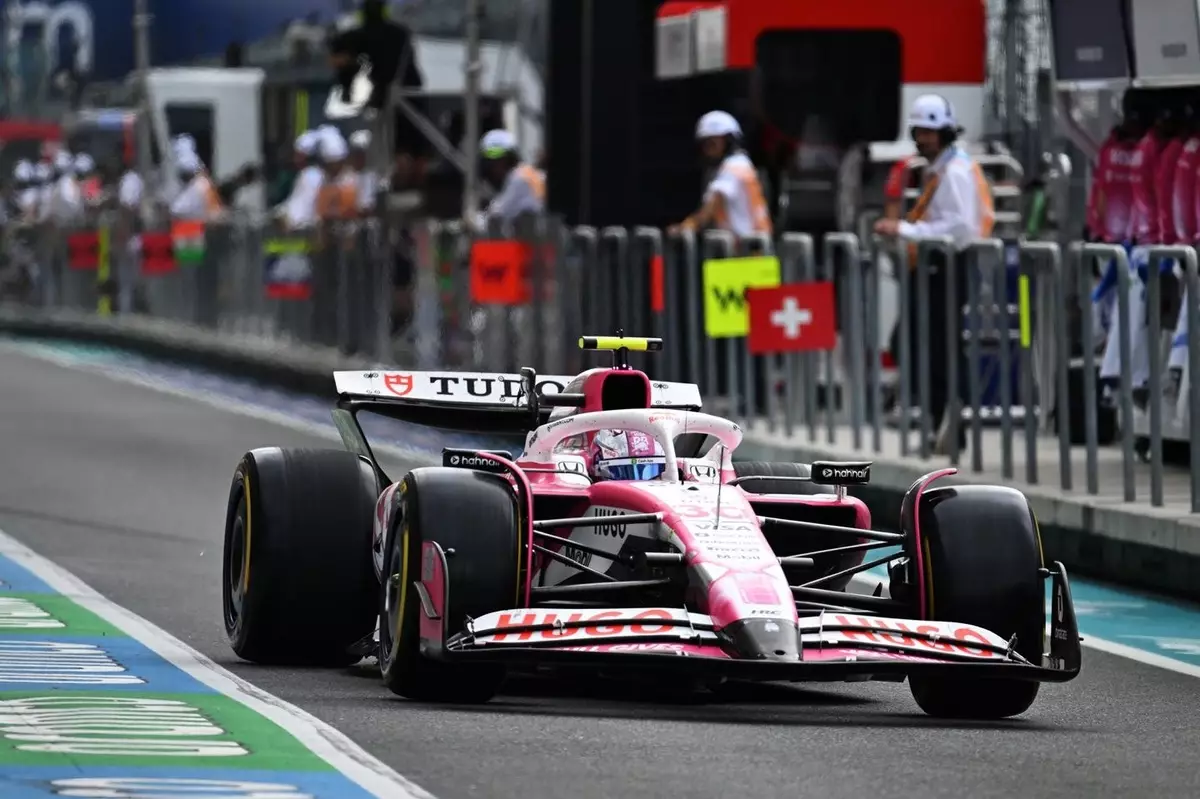In the high-stakes world of Formula 1, where milliseconds can oscillate between victory and defeat, the Racing Bulls team is embracing a philosophy of measured progression as they prepare for the Emilia-Romagna Grand Prix. This weekend marks the debut of a substantial upgrade package, featuring an entirely new floor and bodywork. However, the team, under the guidance of team principal Laurent Mekies, is tempering expectations. Given the unforgiving nature of F1 aerodynamics, their approach appears not just prudent, but essential.
The season has already highlighted the risks of radical changes, with last year’s ill-fated Barcelona upgrade serving as a cautionary tale. Instead of chasing instant validation through sweeping modifications, the Racing Bulls are meticulously analyzing data and prioritizing aerodynamic integrity. As Mekies puts it, “Going step by step is the only way you are going to have some sort of confidence that you are not breaking everything.” This mindset reflects a growing awareness within the paddock about the volatile balance between speed and reliability.
Understanding Aerodynamics: The Heart of Performance Gains
Aerodynamics plays a pivotal role in determining a car’s performance on the track, influencing everything from downforce to drag. The surface area of the floor and bodywork constitutes the most notable aerodynamic canvas available to teams. Racing Bulls’ latest adjustments are expected to yield marginal improvements. Yet, as the team acknowledges, those small tweaks can be transformative within a tightly contested midfield, where even a handful of tenths can dramatically shift a car’s qualifying position.
With a grid that is more competitive than ever, the stakes are incredibly high. The Racing Bulls have found themselves oscillating within the midfield this season, garnering points in China and Japan but struggling to replicate that form in subsequent races. This inconsistency underscores the necessity of honing in on performance development, even if that means taking minor steps rather than grand leaps.
A Cautious Yet Ambitious Outlook
Mekies has articulated a vision of cautious ambition. The Racing Bulls team is rearranging its developmental priorities based not solely on the delivery of immediate performance but on a sustainable roadmap toward the future. He acknowledges that significant races like the upcoming Barcelona Grand Prix could dictate the trajectory of their project, laying bare the trade-off between ongoing development for the current season and a full pivot towards the 2026 regulations.
This strategic approach is a clever acknowledgment of the current competition landscape. With established teams like Mercedes and Red Bull maintaining their dominance, Racing Bulls’ pathway to success hinges on optimizing current performance while remaining adaptable. The intention of careful calibration means that this weekend’s upgrade, while pivotal, is only a stepping stone rather than a magical fix.
The Clash of Confidence and Caution
The confluence of ambition and caution is starkly illustrated within Mekies’ philosophy. He indicates that there is no longer room for “large steps” in contemporary F1; instead, the focus shifts towards incremental improvements that can yield a compounded effect over time. This encapsulates a broader trend among teams that are increasingly aware of the risk and reward involved in each development choice.
As Racing Bulls gears up for their home race in Imola, the implications of their strategy reach beyond the pursuit of points. Imola becomes a testing ground, a venue where the impact of their latest updates can be assessed against the backdrop of an ever-evolving competitive environment. Each lap around the track will serve as a live experiment, informing their future decisions and recalibrating their ambitions for the remainder of the season.
While many observers might expect formulaic patterns in team development, Racing Bulls’ narrative is anything but ordinary. Their focus on learning from past mistakes, combined with a strategic recalibration of goals, showcases a frank understanding of modern F1’s challenges. The amount of data and analysis at their disposal informs each decision, allowing them to navigate toward a position of competitive strength without compromising the integrity of their vehicle’s performance.


Leave a Reply